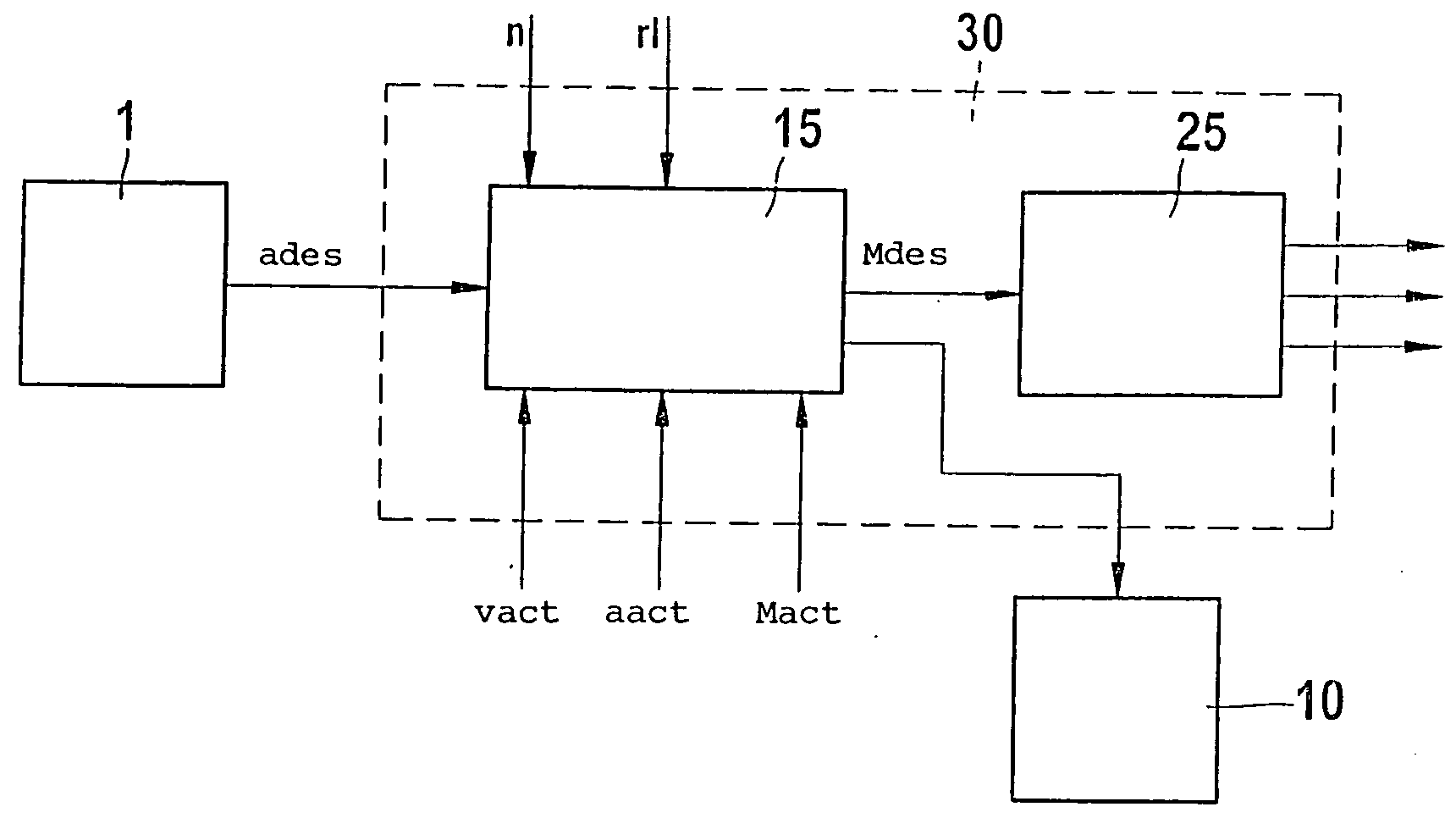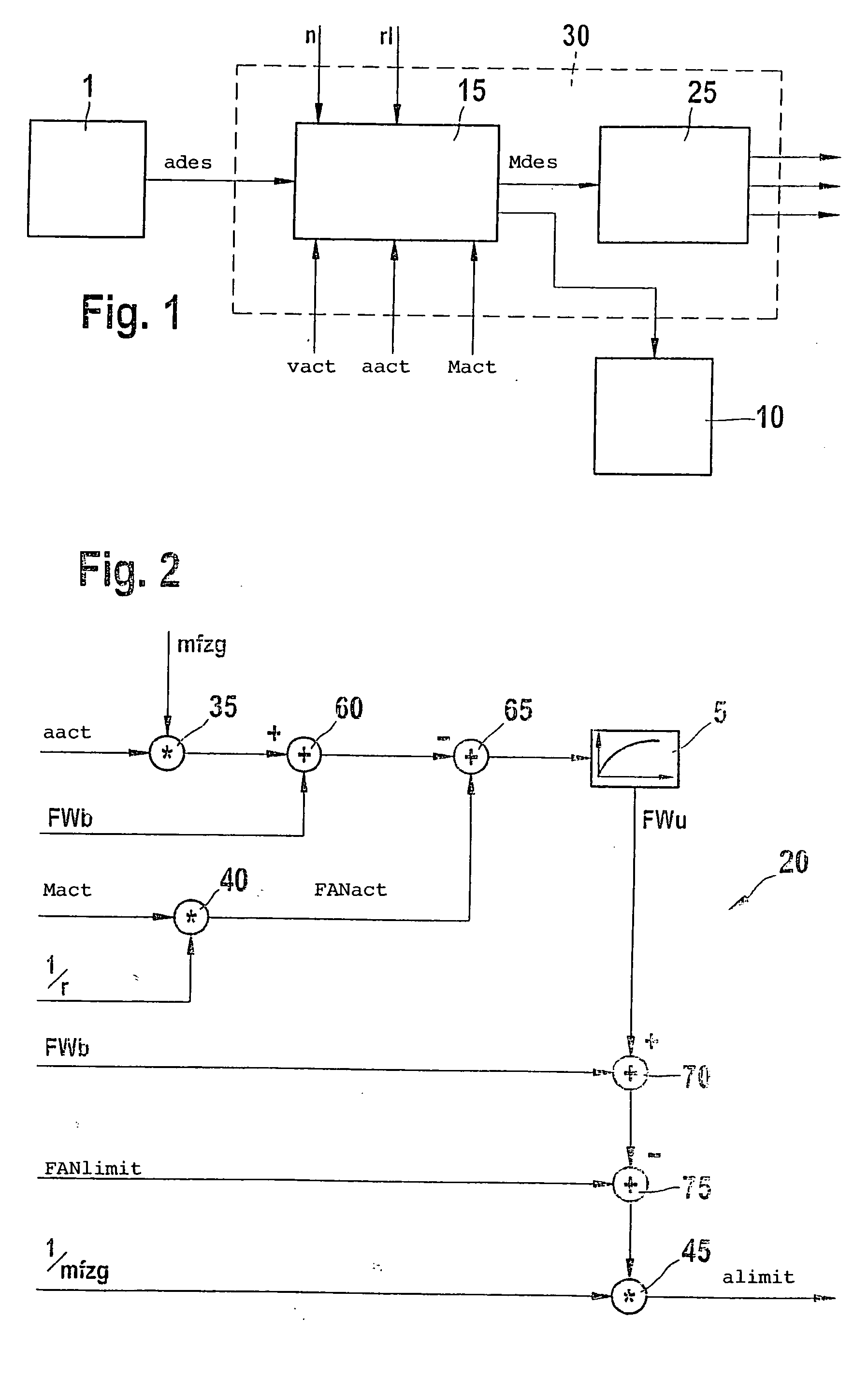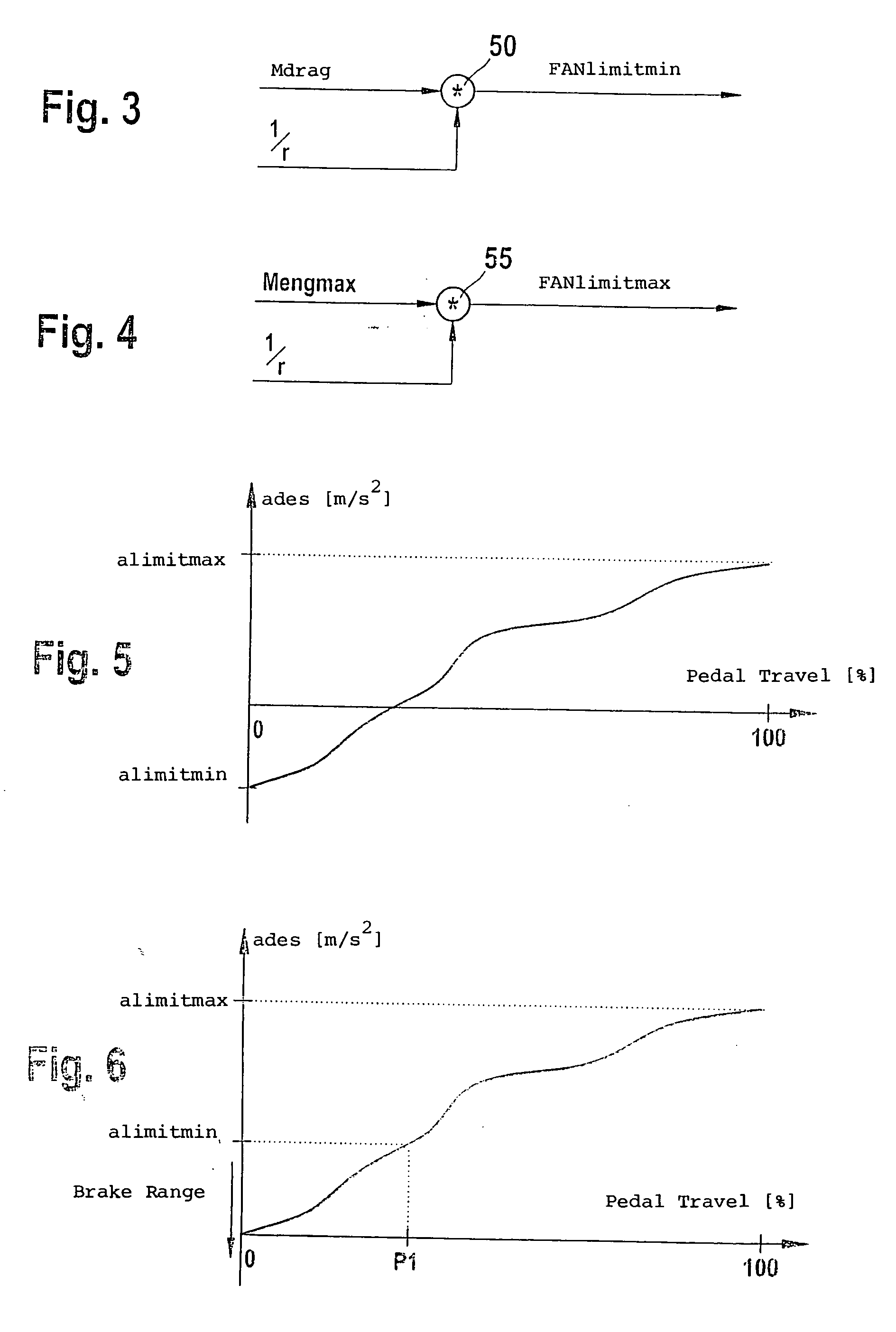[0004] The method of the invention and the arrangement of the invention for controlling the drive unit of a vehicle with the features of the independent claims have the
advantage over the above that in dependence upon an instantaneous running resistance, a minimum value and / or a maximum value for the acceleration of the vehicle is determined and that the minimum value and / or the maximum value are assigned in each case to a limit of a positioning region for the position of the operator-controlled element. In this way, the positioning region for the position of the operator-controlled element can be made current in dependence upon the instantaneous running resistance in such a manner that neither lost motion nor dead path occur when an acceleration command is inputted via the accelerator pedal. In this way, the driving comfort is increased.
[0012] A further
advantage is that the allocation of the minimum value and / or of the maximum value to the particular limit of the actuating range is carried out in dependence upon an instantaneous vehicle speed. In this way, for example for downhill stretches, the additional activation of the
vehicle brake with the released accelerator pedal is initiated only when a pregiven vehicle speed is exceeded in order to free the driver from a continuous actuation of the accelerator pedal to reduce a braking effect. In this way, the driving comfort is, in turn, increased.
[0005] Advantageous further embodiments and improvements of the method given in the main claim are possible via the measures set forth in the dependent claims.
[0006] It is especially advantageous when an unknown component of the running resistance is derived with the aid of a driving
dynamic equation in dependence upon: an instantaneous drive force of the vehicle; a known component of the running resistance; and, an instantaneous
vehicle acceleration. In this way, the instantaneous running resistance can be determined very precisely while considering a known component of the running resistance as well as while considering the unknown component thereof. This makes possible also a precise determination of the minimum value and / or of the maximum value for the acceleration of the vehicle. Lost motion and dead path can be avoided still better in this way.
[0007] It is also advantageous when the unknown component of the running resistance is filtered especially by means of a lowpass. In this way, oscillations, which result with the determination fo the unknown component, can be substantially eliminated.
[0009] A further
advantage is that the maximum value of the acceleration is determined from a maximum drive force less the instantaneous running resistance with this maximum drive force being determined by the instantaneous
operating point of the vehicle. In this way, the maximum value of the acceleration essentially corresponds to the
vehicle acceleration reached maximally at the instantaneous
operating point of the vehicle. In this way, the dead path can be avoided in the region of the upper accelerator pedal stop when the acceleration command is inputted via the accelerator pedal.
[0009] A further advantage is that the maximum value of the acceleration is determined from a maximum drive force less the instantaneous running resistance with this maximum drive force being determined by the instantaneous
operating point of the vehicle. In this way, the maximum value of the acceleration essentially corresponds to the
vehicle acceleration reached maximally at the instantaneous operating point of the vehicle. In this way, the dead path can be avoided in the region of the upper accelerator pedal stop when the acceleration command is inputted via the accelerator pedal.
[0010] It is especially advantageous when, in the case of a minimum value of an acceleration, which exceeds the value 0, a
vehicle brake is activated at the position of the operator-controlled element assigned to the minimum value. In this way, for a released accelerator pedal and a correspondingly
steep slope, for which the
drag torque is no longer adequate to hold the instantaneous vehicle speed, a
brake command of the driver can be detected and realized without an actuation of the
brake pedal being required. In this way, the driving comfort is further increased.
[0011] It is especially advantageous when the
brake force is so selected that the minimum value of the acceleration is reduced to approximately 0. In this way, the released accelerator pedal is interpreted such that the value 0 should be permitted as the smallest possible acceleration. In this way, the
driving safety is especially increased in downhill stretches.
[0012] A further advantage is that the allocation of the minimum value and / or of the maximum value to the particular limit of the actuating range is carried out in dependence upon an instantaneous vehicle speed. In this way, for example for downhill stretches, the additional activation of the
vehicle brake with the released accelerator pedal is initiated only when a pregiven vehicle speed is exceeded in order to free the driver from a continuous actuation of the accelerator pedal to reduce a braking effect. In this way, the driving comfort is, in turn, increased.
 Login to View More
Login to View More  Login to View More
Login to View More 


